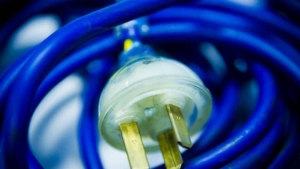Power prices are set to rise by about another $200 a year, writes Amy Remeikis, for the Brisbane Times. The average Queensland power bill will rise by 13.6 per cent next financial year, equating to around $192 per year.
The Queensland Competition Authority made no changes to its draft determination price from December, meaning a typical household on tariff 11 will see a 13.6 per cent increase in electricity prices for the next financial year. That works out to about $192 over the year.
A typical small business customer will see a jump of about 11.5 per cent or $219 to their tariff.
QCA chairman Malcolm Roberts said the increase was largely driven by a higher cost of wholesale energy and the solar bonus scheme payments.
Last financial year, household electricity prices increased by about 22 per cent or $260 a year. The July increase will see the average bill of $1407 jump to $1598.
“It is unusual to see the wholesale price rise like this,” Mr Roberts said.
“The wholesale price has been relatively flat for a number of years. In fact, in real terms, the whole sale price has probably been going backwards. Two main factors are at work here, we are seeing an expectation of increased demand in Queensland as the LNG production comes in line and we are seeing an increase in fuel prices, particularly gas prices, and that is adding up to an increased wholesale price.”
The cost of the 44 cent solar feed-in-tariff, which was taken up by slightly less than 285,000 households, will double in the 2014-15 financial year, which accounts for $54 for the average bill.
If the federal government is successful in repealing the carbon tax, prices would still increase but the jump will be about 5.4 per cent or just under $80.
Mr Roberts said if the carbon tax was repealed, the price would drop.
“Prices can be changed once the carbon tax is repealed,” he said.
“We set regulated prices and we will change the regulated price when the minister asks us to, after the repeal of the carbon tax.”
Mr Roberts said Queensland was “on par” with other states in terms of power costs.
During the 2012 election campaign, the government promised to lower electricity bills by at least $120 a year.
It attempted to have an impact on the cost of living by freezing the tariff 11 price increase, but that led to the 21.4 per cent increase in the last financial year.
The government has scrapped the mandated 8 cent solar feed-in-tariff in favour of having solar customers negotiate directly with energy retailers and it has introduced legislation to de-regulate electricity prices in southeast Queensland, meaning next year, the price will be set by the market, not the QCA.
Chief Executive Officer of the Queensland Council of Social Service, Mark Henley, said the increase fixed costs would be felt the most “by those who can afford it the least”.
“People are making tough decisions and they are making decisions about turning off the power at times when they actually really need it,” he said.
“..Sometimes it is a choice between actually living in the dark and actually putting a meal on the table or being able to afford to go to the doctor.”
Mr Henley said he had spoken to energy minister Mark McArdle about lowering prices or establishing a concession for low income earners.
“The solution is to look at what concessions are available to people on low income, who can no longer afford things such as energy and I think government is looking at that and we welcome that, but this increases the urgency,” he said.
Mr McArdle said state Labor’s “legacy” from the Solar Bonus Scheme and the carbon tax were to blame.
He said the easiest way to lower electricity prices would be for Labor to support the carbon tax repeal bill.
“The QCA’s report clearly shows that electricity price increases this year and next year are the pass-through of costs associated with the former Labor Governments’ reckless spending on electricity assets,” he said in a statement.
“Whether by political design – or incompetence – past and present Labor MPs booby-trapped Queensland’s path to more affordable electricity prices.”
At a glance:
Household prices to jump 13.6 per cent or $191 from July 1
Major price jump factors
Wholesale price increase – $73
Solar Bonus Scheme – $54
Poles and wires – $38
Earlier
Energy minister Mark McArdle can’t say “off hand” how much electricity prices have increased since the LNP came to power.
But ahead of the Queensland Competition Authority handing down its price determination for the next financial year – which is 13.6 per cent or about $192 a year on average – Mr McArdle said the government had a “strong plan” to stabilise prices.
In the previous year, a 21.4 per cent price rise added about $260 a year to the average Queensland household electricity bill.
That increase factored in the tariff 11 price freeze the government enacted when coming into power.
In the past two years, electricity prices have increased 50 per cent.
During the election campaign, Premier Campbell Newman promised to lower the average household power bill by at least $120 a year.
Mr McArdle told Fairfax Radio 4BC Mornings on Friday the government did not “hide” from the fact power prices had increased, but he said it had a plan to combat price rises.
The government recently passed legislation which scrapped the mandatory eight cents solar feed-in-tariff for households in southeast Queensland. Instead solar customers will have to negotiate directly with energy retailers.
It also recently introduced legislation to de-regulate electricity prices. Once passed, the QCA will release draft price determinations for regional Queensland only. Southeast Queensland will rely on “competition” to set its price.
View original article on the Brisbane Times website here.